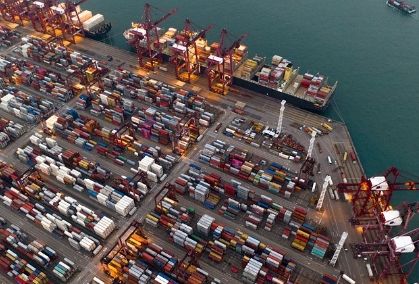What is Trade Surplus?
What describes a trade surplus?
A trade surplus occurs when a country exports more goods and services than it imports over a given period. In simpler terms, it means that the value of a nation's exports exceeds the value of its imports. This can lead to an accumulation of foreign currency reserves, as the surplus is typically settled in the currency of the exporting nation. Trade surplus is often viewed as a positive economic indicator, indicating competitiveness in international markets and potential for economic growth.

What is the difference between trade surplus and trade deficit?
The key distinction between a trade surplus and a trade deficit lies in the balance of trade. While a trade surplus signifies that a country's exports exceed its imports, a trade deficit indicates the opposite scenario, where imports surpass exports. In the case of a trade deficit, a country is spending more on imported goods and services than it is earning from exports, leading to a net outflow of currency. This can result in a depletion of foreign currency reserves and may necessitate borrowing from foreign sources to finance the deficit. Consequently, trade deficits are often perceived as a concern for policymakers, as they can impact a nation's currency value, employment levels, and overall economic stability.
Is a trade surplus good?
Whether a trade surplus is considered "good" or "bad" depends on various factors and the broader economic context. In general, a trade surplus can offer several advantages for an economy. Firstly, it indicates that a country is competitive in international markets, as its goods and services are in demand globally. This can enhance the country's economic standing and promote growth in key industries. Additionally, a trade surplus can contribute to a positive balance of payments, strengthening the nation's currency and reducing reliance on external financing. Moreover, surplus funds can be invested in infrastructure development, education, or other productive endeavors, further fueling economic growth.
However, a persistent trade surplus may also have drawbacks. It can lead to currency appreciation, making exports more expensive and potentially reducing competitiveness in the long term. Additionally, a reliance on exports for economic growth can make a country vulnerable to fluctuations in global demand or changes in trade policies. Furthermore, if a trade surplus is achieved at the expense of domestic consumption or investment, it may hinder overall economic development and welfare.
In conclusion, while a trade surplus is generally seen as a positive economic indicator, its implications depend on various factors, including the sustainability of the surplus, its impact on currency valuation, and the overall economic environment. Policymakers must carefully assess the benefits and challenges associated with trade surpluses to ensure balanced and sustainable economic growth.
Related articles

 WeChat of CBiBank
WeChat of CBiBank